In liquid chromatography-mass spectrometry (LC-MS) laboratories, nitrogen acts as an “invisible engine”—from sample nebulization in the electrospray ionization (ESI) source, to solvent drying, and to collision-induced dissociation in triple quadrupoles, every step relies on a stable and clean nitrogen supply. Today, nitrogen generators have replaced traditional gas cylinders to become the absolute mainstream for LC-MS gas supply, with gas cylinders only remaining as a supplementary option in small laboratories with limited budgets or temporary scenarios. This article will elaborate on how nitrogen generators empower efficient LC-MS operation from three dimensions: application principles, technical adaptation, and selection skills.
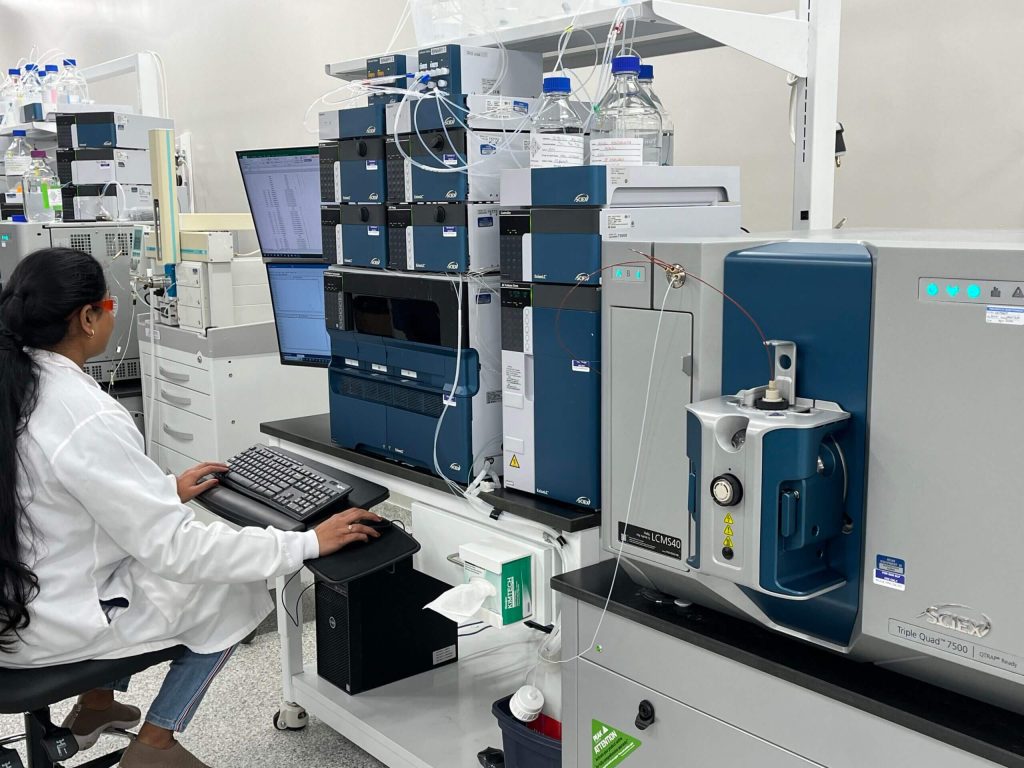
I. “Nitrogen Necessity” for LC-MS: Full-Process Dependence from Ionization to Qualitative Analysis
The stability of Nitrogen’s purity and flow rate directly determines the reliability of experimental data.The core advantage of LC-MS lies in “high-efficiency separation + accurate qualitative analysis”, and nitrogen plays a role throughout the entire chain of ionization and detection. The stability of its purity and flow rate directly determines the reliability of experimental data. It can be divided into three core application scenarios by function:
1.1 Nebulizing Gas: The “Start Button” for Sample Ionization
In the ESI source, nitrogen impacts the sample solution at a high speed with a pressure of 0.3-0.6 MPa and a flow rate of 5-15 L/min, dispersing it into micron-level aerosol droplets—which is the first step for the sample to convert from “liquid state” to “ionic state”. If the nitrogen flow rate fluctuates, it will lead to uneven droplet sizes, directly reducing the ion yield; unstable pressure may cause disordered voltage matching between the nebulizer needle and the ion source, resulting in signal drift.
In the atmospheric pressure chemical ionization (APCI) source, nitrogen plays a more critical role: it not only assists in nebulization but also accelerates solvent evaporation through the synergistic effect with the heated capillary, providing a dry environment for subsequent chemical ionization. At this time, the “continuous supply” of nitrogen is more important than the “instantaneous flow rate”—a 10-second interruption may lead to solvent residue in the ion source, affecting subsequent detection.
1.2 Drying Gas: The “Key Barrier” to Improve Detection Sensitivity
If the nebulized droplets carry a large amount of solvent (such as methanol and acetonitrile), solvent molecules will compete with target ions for charges, triggering the “ion suppression effect” and causing the detection signal to weaken or even disappear. The core function of drying gas is to blow through the ion source at a high temperature of 300-400°C and a flow rate of 10-20 L/min, quickly stripping solvent molecules from the droplets and allowing target ions to enter the mass analyzer more efficiently.
This link has extremely strict requirements for nitrogen purity: if the purity is lower than 99.999% , the moisture contained in nitrogen will react with the sample at high temperatures to generate false positive ions; hydrocarbon impurities will form carbon deposits in the ion source, clogging the nebulizer needle and cone orifice, and shortening the instrument life. Actual data from a food laboratory shows that when using nitrogen with a purity of 99.99%, the relative standard deviation (RSD) for aflatoxin detection is 1.2%; after switching to 99.999% purity, the RSD drops to 0.5%, and the sensitivity doubles.
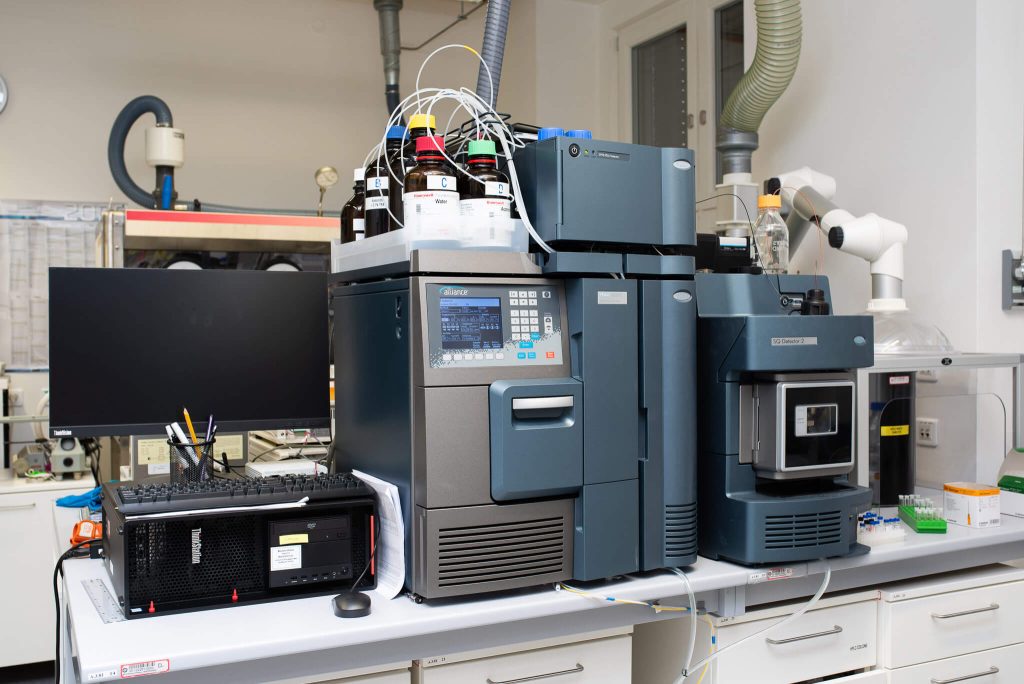
1.3 Collision Gas: The “Characteristic Decoder” for Compound Qualification
In LC-MS with multi-stage mass spectrometry functions such as triple quadrupoles and Q-TOF, nitrogen, as an inert collision gas, undertakes the core task of “fragmenting parent ions”. It collides inelastically with parent ions, transfers energy to break them into characteristic fragment ions, and then parses the compound structure through the mass spectrum of fragment ions to achieve accurate qualification.
The nitrogen requirement here can be called “precision-oriented”: the purity needs to reach more than 99.9995% (6 nines), and impurities will interfere with the uniform transfer of collision energy, leading to disordered fragment peak shapes; the flow rate needs to be precisely controlled at 0.1-1 mL/min, with a fluctuation of ≤±0.05 mL/min—otherwise, “incomplete fragmentation of parent ions” or “over-fragmentation” may occur, affecting the accuracy of qualitative results.
II. Mainstream Choice: Why Nitrogen Generator for LC-MS Replaces Gas Cylinders?
The nitrogen generator produces nitrogen on-site, providing continuous supply, is stable and safe, and does not require transportation. Ten years ago, gas cylinders were still the “standard configuration” in LC-MS laboratories, but now the penetration rate of nitrogen generators has exceeded 80% in medium and large pharmaceutical companies, key university laboratories, and third-party testing institutions. The core of this transformation is that generators perfectly solve the four major pain points of gas cylinder supply:
2.1 Supply Continuity: Bid Farewell to the “Nightmare of Experimental Interruption”
LC-MS experiments often need to run continuously for hours or even days (such as pharmacokinetic research and trace detection of environmental samples). A 40L high-pressure gas cylinder can only provide about 9000 liters of nitrogen. Calculated at a flow rate of 15 L/min, it needs to be replaced in less than 10 hours. During the replacement process, not only is the experiment forced to be interrupted, but it also takes an additional 1-2 hours to restart the instrument and balance the ion source, seriously affecting efficiency.
Nitrogen generators realize 24/7 uninterrupted gas supply through the real-time conversion process of “air → compression → adsorption → nitrogen generation”. Comparative data from a pharmaceutical company shows that after using the generator, the effective operation time of LC-MS has increased from 6 hours per day to 20 hours, and the experimental cycle has been shortened by 60%.
2.2 Safety: From “High-Pressure Hidden Danger” to “Intrinsic Safety”
High-pressure nitrogen stored in gas cylinders (with a pressure of about 15 MPa) has multiple safety risks: collisions during transportation may damage the valve and cause explosions; in poorly ventilated laboratories, leaked nitrogen will quickly reduce the oxygen content in the room, causing suffocation (nitrogen is colorless and odorless, making it difficult to detect); valve aging in some gas cylinders may also cause fluctuations in gas purity, affecting experimental results.
Nitrogen generators avoid these risks from the source: they use laboratory air as raw material, generate gas on demand, and do not need to store a large amount of high-pressure gas; the equipment operating pressure is only 0.6-1.0 MPa, and it is equipped with overpressure protection, leakage alarm and other devices; some high-end models can also be linked with the laboratory ventilation system to further improve safety.
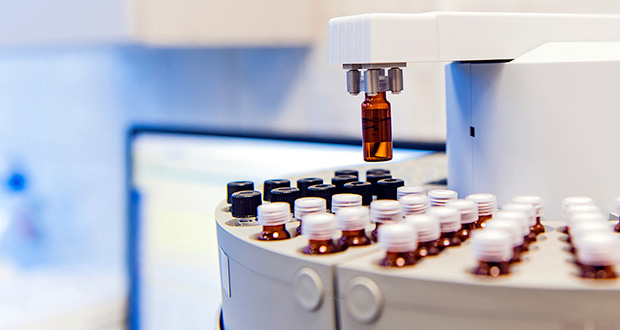
2.3 Cost Advantage: Short-Term Investment, Long-Term Savings
The “hidden costs” of gas cylinder supply are often overlooked: the cost of a cylinder of industrial-grade nitrogen (99.99%) is about $6.9-$11.0. Calculated based on a single LC-MS running for 8 hours a day, 30-40 cylinders are consumed per month, with an annual cost of about $2,760-$4,140; if high-purity nitrogen (99.999%) is needed, the cost per cylinder rises to $27.6-$41.4, and the annual cost exceeds $13,800. In addition, it is also necessary to pay for gas cylinder rental fees, transportation fees, and reagent waste costs caused by experimental interruptions.
Although the initial purchase price of nitrogen generators is relatively high ($8,280-$11,040 for domestic models and $13,800-$20,700 for imported models), the subsequent maintenance costs are extremely low: only 2-3 replacements of the front air filter are required per year (total cost about $138), and the life of the carbon molecular sieve can reach 3-5 years. Converted, the annual operation and maintenance cost is only $276-$414. For laboratories with large gas consumption, the cost can usually be recovered in 1-2 years, and the long-term use cost advantage is significant.
2.4 Purity Stability: Reject “Terminal Contamination”
The purity of cylinder nitrogen has a “terminal risk”: when 10% of the gas remains in the cylinder, impurities (moisture, oil) deposited at the bottom of the cylinder will enter the LC-MS with the gas, causing ion source contamination. To avoid this problem, many laboratories will take the initiative to discard the remaining gas, resulting in a waste of about 10%.
Nitrogen generators ensure stable purity through a “multi-stage purification” system: the front filter removes dust and oil from the air; the carbon molecular sieve (PSA technology) selectively adsorbs oxygen and moisture; the post-hydrocarbon removal filter (for high-resolution mass spectrometry) further reduces the total hydrocarbon content to ≤0.1 ppm. Most models are equipped with an online oxygen content detector, which displays the purity in real time (≤10 ppm is qualified), allowing experimenters to control the whole process.
2.5 “Living Space” for Gas Cylinders: Only Suitable for Niche Scenarios
Despite the obvious advantages of generators, gas cylinders have not completely withdrawn from the market and still have certain value in the following scenarios:
- Small start-up laboratories: Low experiment frequency (1-2 times a week) and limited budget, no need to bear the high initial investment of generators, and the “on-demand purchase” mode of gas cylinders is more flexible.
- Temporary/field experiments: Such as environmental emergency testing and on-site drug screening, it is impossible to build supporting gas circuits for generators, so portable gas cylinders are more suitable.
- Extreme special needs: Some ultra-trace analysis (such as pg-level toxin detection) requires 99.99999% (7 nines) ultra-high purity nitrogen, which is difficult for generators to achieve stably, and special cylinder gas is required (but 15% of the terminal gas needs to be discarded to avoid contamination).
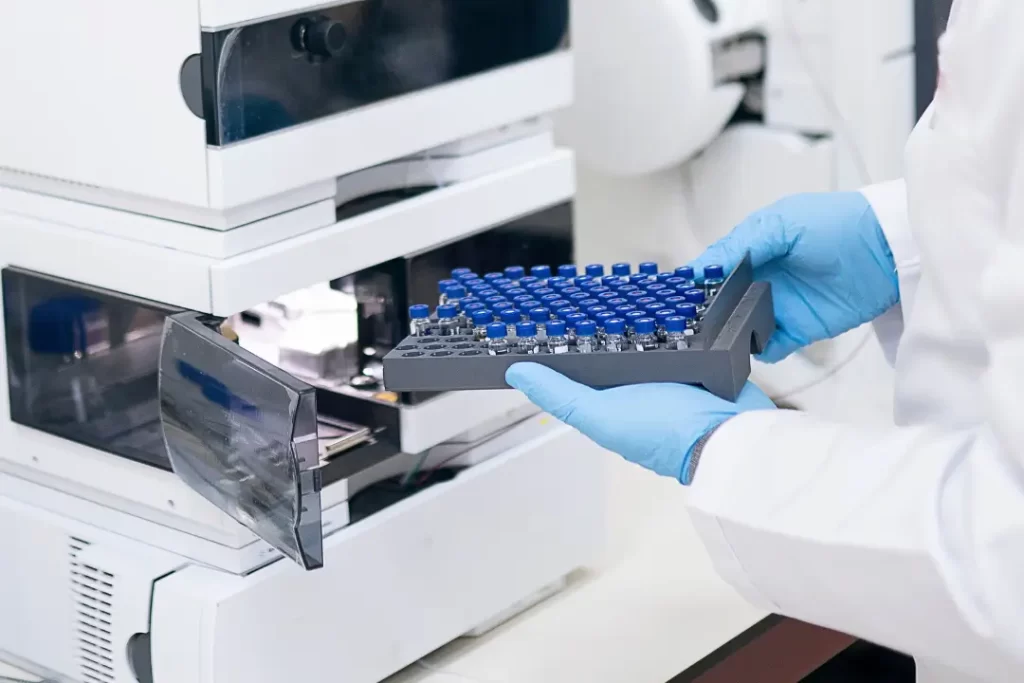
III. How to Select Nitrogen Generator for LC-MS: Four Core Elements
The key to selecting the right generator is to “match the actual needs of LC-MS” rather than blindly pursuing high configurations. The following four elements should be focused on:
3.1 Purity: “Precise Matching” According to Mass Spectrometry Type
Different types of LC-MS have great differences in nitrogen purity requirements. Excessive pursuit of high purity will increase costs, while insufficient purity will lead to experimental failure:
| LC-MS Type | Core Application | Nitrogen Purity Requirement | Recommended Configuration |
| Single Quadrupole LC-MS (ESI/APCI) | Routine Quantitative Analysis (e.g., Pesticide Residue, Veterinary Drug Detection) | 99.999% (5 Nines) | Basic PSA Nitrogen Generator, No Post-Hydrocarbon Removal Needed |
| Triple Quadrupole LC-MS/MS | Qualitative and Quantitative Analysis of Complex Matrices (e.g., Biomarker Drug Metabolism) | 99.9995% (6 Nines) | PSA Type + Post-Hydrocarbon Removal Filter |
| High-Resolution LC-MS (Q-TOF/Orbitrap) | Compound Structure Elucidation, Trace Unknown Screening | 99.9995%+ (Total Hydrocarbon ≤0.1 ppm) | Ultra-High Purity PSA Type + Multi-Stage Hydrocarbon Removal + Online Monitoring |
3.2 Flow Rate and Pressure: “Dynamic Adaptation” According to the Number of Instruments
Insufficient flow rate will lead to incomplete nebulization and poor drying effect, while pressure fluctuation will cause signal drift. When selecting, it is necessary to calculate the “total required flow rate” and reserve a redundancy of 10-20%:
- Single Routine LC-MS (e.g., Agilent 1290/6470): The total flow rate of nebulizing + drying gas is 15-25 L/min, and the collision gas flow rate is 0.5-1 mL/min. The generator needs to support dual-channel output of “large-flow main circuit + small-flow precision branch”, with stable pressure at 0.4-0.5 MPa (fluctuation ≤±0.02 MPa).
- 2-3 LC-MS in Parallel (e.g., Pharmaceutical QC Laboratory): The total flow rate is 30-50 L/min. A modular generator (which can parallel multiple nitrogen generation units) is recommended to support on-demand expansion and avoid excessive one-time investment.
- High-Resolution LC-MS (e.g., Thermo Q Exactive): The flow rate requirement is 20-30 L/min, and a built-in buffer gas storage tank (above 10 L) is required to balance the instantaneous flow peak and ensure stable pressure of the ion source.
3.3 Compatibility: “Seamless Connection” with LC-MS
The generator needs to perfectly match the gas circuit system of LC-MS to avoid “incompatible interfaces” or “asynchronous control” problems:
- Interface Matching: Supports connection with standard 316L stainless steel gas pipes or PTFE pipes, and is equipped with Swagelok quick connectors, which can be directly connected to the ion source gas supply port of mainstream LC-MS brands such as Waters, Agilent, and Thermo without additional adapters.
- Control Synergy: High-end generators can be linked with the LC-MS workstation through RS232 or Ethernet interfaces to realize “instrument startup → generator automatically starts gas supply” and “instrument shutdown → generator shuts down after a 30-minute delay (to purge the gas circuit)”, reducing manual operation costs.
- Brand Certification: Priority should be given to generators with official compatibility certification from LC-MS manufacturers. Well-known imported brands like Peak UK (with cooperation certification with Waters) and Parker have established market recognition, while some emerging global brands also offer reliable compatibility with mainstream LC-MS models, supported by professional technical verification.
3.4 Maintenance and After-Sales: Reduce Long-Term Use Costs
The service life and maintenance convenience of the generator directly affect the long-term use experience. When selecting, attention should be paid to:
- Core Component Quality Assurance: Carbon molecular sieve is a core consumable, and products with a quality assurance period of 3-5 years should be selected (inferior molecular sieves have a service life of only 1-2 years and high replacement costs); the compressor quality assurance period is ≥2 years to ensure stable operation.
- Maintenance Convenience: The front filter and hydrocarbon removal filter should be designed as “quick-release type”, which can be replaced without professional tools; it is equipped with a touch screen operation interface, which displays parameters such as purity, flow rate, and pressure in real time, and automatically pops up prompts when there is a fault (such as “filter needs to be replaced” and “air pressure is insufficient”).
- Localized After-Sales Service: Choose brands with local service centers to ensure services such as on-site installation and commissioning (including gas circuit connection and parameter calibration) and fault response (within 24 hours) to avoid experimental stagnation caused by equipment failures.
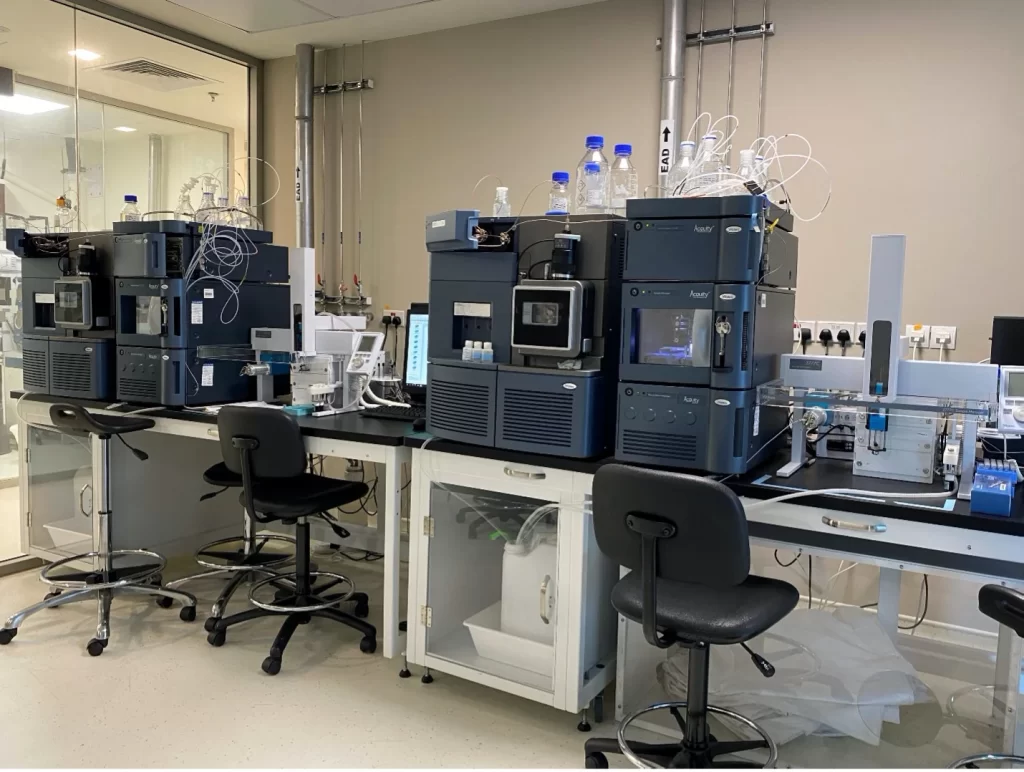
IV. Practical Cases: How Do Generators Solve Practical LC-MS Problems?
Case 1: “Efficiency Revolution” in a Pharmaceutical QC Laboratory
A pharmaceutical QC laboratory originally had 3 Thermo TSQ Quantiva triple quadrupole LC-MS. When using gas cylinder supply, it needed to replace 6-8 gas cylinders every day, resulting in frequent experimental interruptions. Moreover, the ion source needed to be cleaned once a week due to impurities at the end of the gas cylinder. After replacing with a modular PSA nitrogen generator (total flow rate 40 L/min):
- Experimental Continuity: The effective operation time of LC-MS increased from 8 hours per day to 22 hours, and the detection efficiency of drug metabolites increased by 175%.
- Instrument Maintenance: The ion source cleaning cycle was extended to once a month, saving about $2,760 per year in reagent costs and labor costs.
- Cost Recovery: The purchase cost of the generator was $16,560, and the cost was recovered through gas cylinder cost savings in 1.5 years.
Case 2: “Purity Guarantee” for High-Resolution Mass Spectrometry in a University
The Thermo Orbitrap Fusion Lumos high-resolution LC-MS in an university analysis and testing center is used for proteomics research. The original cylinder nitrogen had high baseline noise due to trace hydrocarbons, and the detection limit of low-abundance peptides could only reach 10 ng/mL. After replacing with an ultra-high purity nitrogen generator with multi-stage hydrocarbon removal:
- Detection Performance: The baseline noise was reduced by 80%, and the peptide detection limit dropped to 1 ng/mL, meeting the needs of trace analysis.
- Data Reliability: The number of identified peptides increased from 8,000 per sample to 12,000, and the experimental repeatability (RSD) decreased from 1.8% to 0.6%.
Common Misunderstandings Explained (FAQ)
Q1: Will the purity of the nitrogen generator decrease over time?
No, it won’t under regular maintenance. The adsorption capacity of the carbon molecular sieve will decrease slightly over time, but by regularly replacing the front air filter (every 3-6 months), contamination of the sieve by dust and oil can be avoided, ensuring its service life reaches 3-5 years. Most generators are equipped with online oxygen content monitoring, which will automatically alarm to prompt maintenance when the purity is lower than the set value (e.g., 10 ppm).
Q2: Can the generator supply gas to both LC-MS and nitrogen evaporator simultaneously?
It depends on the total flow rate. If the flow rate of the nitrogen evaporator is ≤5 L/min (e.g., a small 24-well nitrogen evaporator), gas can be supplied from the main circuit branch of the generator through a flow divider, but it is necessary to ensure that the nebulization/drying gas flow rate of the LC-MS is not affected (it is recommended to install a flow control valve at the shunt). If the flow rate of the nitrogen evaporator is large (e.g., a large 96-well nitrogen evaporator with a flow rate ≥10 L/min), it is recommended to configure a dedicated generator for the LC-MS to avoid gas circuit pressure fluctuations.
Q3: What is the difference between domestic generators and imported generators?
There is no essential difference in core technology (PSA), and the main differences lie in product positioning and service advantages: Imported brands such as Peak and Parker are known for their mature craftsmanship, with better compressor stability and lower noise (≤55 dB), which are suitable for laboratories with extremely high environmental requirements but often come with a premium price tag. At MINNUO, we combine the cost-effectiveness of Asian manufacturing with international quality standards—offering 30-50% lower prices than imported brands, faster global after-sales response (within 24 hours in major regions), and customized drying system optimization for diverse climate environments (from high-humidity tropical areas to dry continental regions), making our solutions a practical choice for global laboratories.
Q4: Will the restart of the generator affect LC-MS operation after a laboratory power outage?
No. Most generators are equipped with a power-off memory function, and they will automatically return to the working state before the power outage after restart. The nitrogen purity and flow rate can be stabilized within 5-10 minutes. If the laboratory is equipped with a UPS emergency power supply, it can ensure that the generator continues to supply gas during the power outage, completely avoiding experimental interruption.
Conclusion: The “Invisible Partner” of LC-MS
Nitrogen generators are no longer just “replacements for gas cylinders”, but “core auxiliary equipment” for maximizing LC-MS performance. With stable purity, continuous supply and safe operation, they solve many pain points of traditional gas supply methods and have become a standard configuration in modern LC-MS laboratories. When selecting a generator, you only need to focus on the four core aspects of “LC-MS type → purity requirement → flow rate matching → compatibility”, and combine your own budget and long-term use needs to choose the most suitable product.
In the future, with the further upgrading of generator technology (such as lower energy consumption, smaller size, and intelligent remote control), its application in LC-MS scenarios will become more extensive, providing a more solid guarantee for efficient and accurate scientific research in laboratories.
If you are looking for professional nitrogen generator selection solutions tailored to your LC-MS configuration and experimental needs, feel free to contact MINNUO. With in-depth experience in LC-MS supporting gas equipment, our technical team will provide one-on-one consulting services to help you optimize the gas supply system, reduce operation costs and improve experimental efficiency. We offer a full range of solutions, from small generators for single LC-MS to modular systems for multi-instrument parallel operation, to meet diverse laboratory needs.


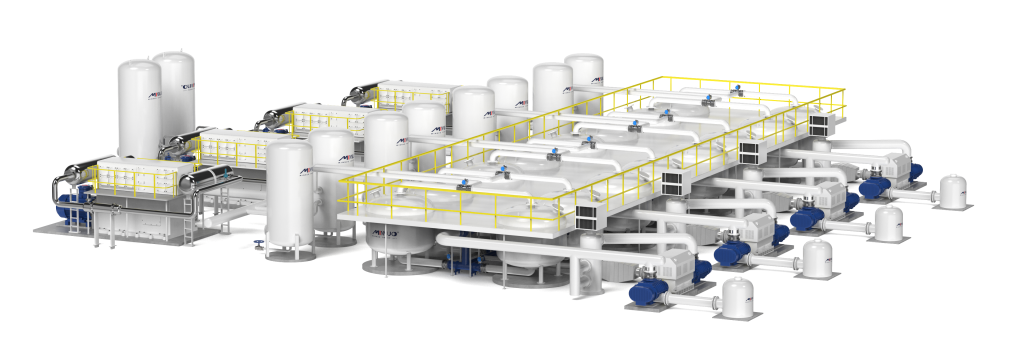

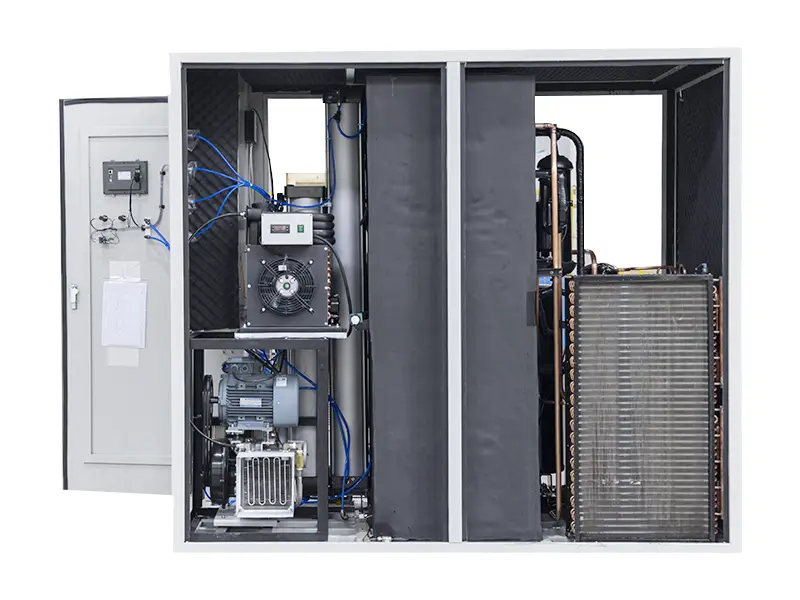

 sales2:+86 17506119168
sales2:+86 17506119168

